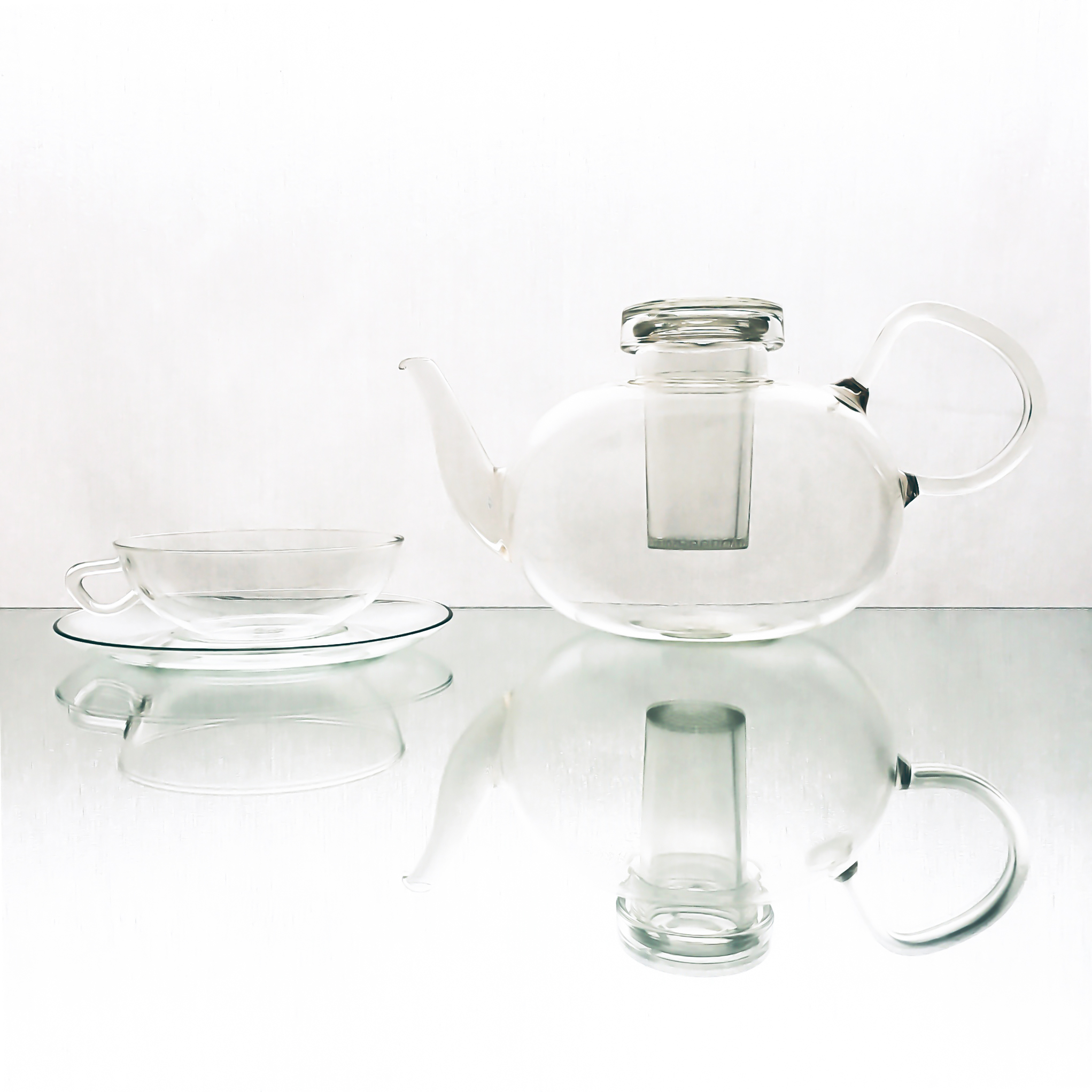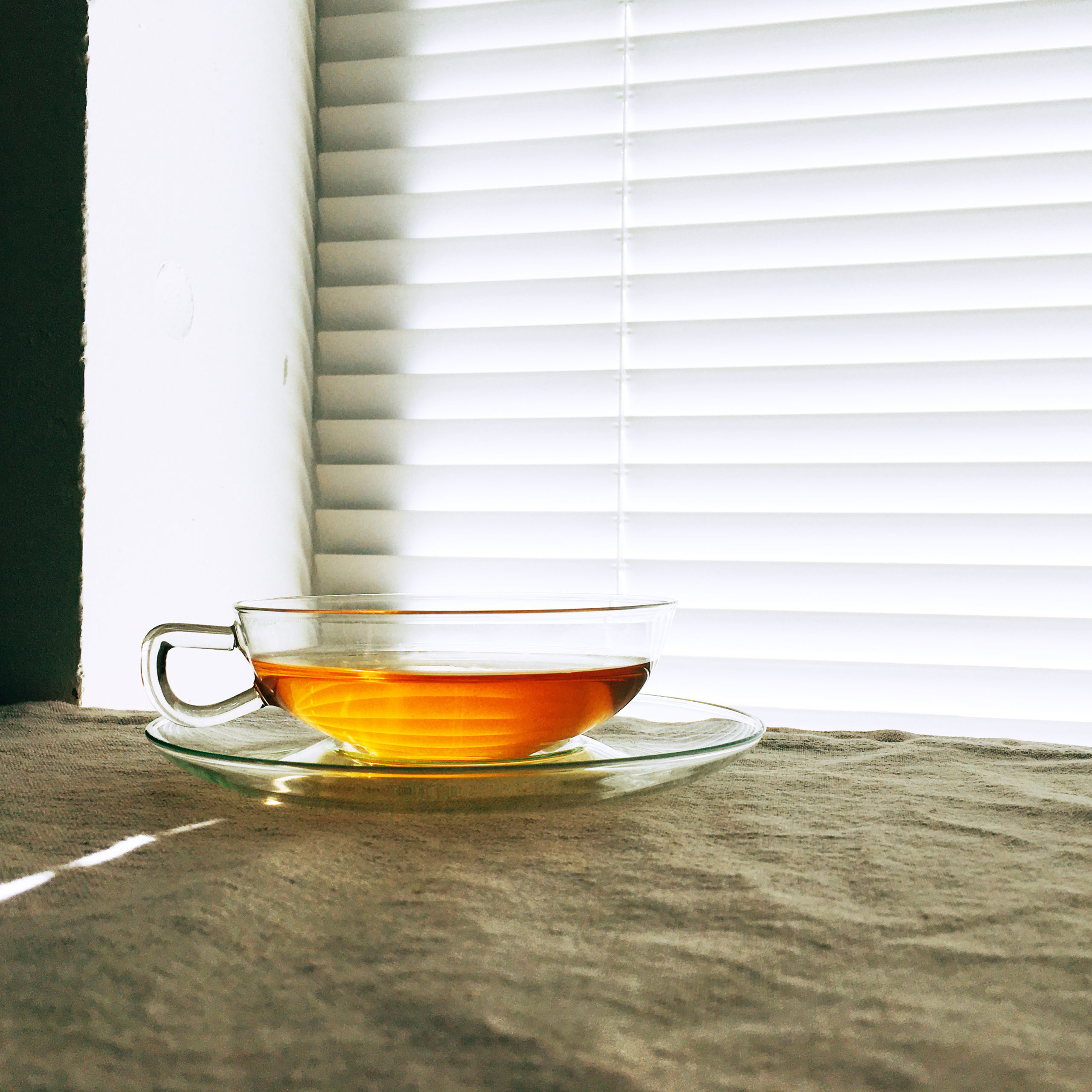#03
drinking
Edition Wilhelm Wagenfeld Teaset
Jenaer Glas
JENA, Thuringia, Germany
- heat-resistant borosilicate glass
- tea pot: H14.5cm W28cm D16.8cm 1500ml
- cup & saucer: H4.3cm W16.7cm D16.7cm 150ml
the product:
The first model of the Teeservice series designed by Mr. Wilhelm Wagenfeld, one of the German Bauhaus designers. The rational and functional design based on the concept of “Form Follows Function” harmonises the new possibilities of heat-resistant borosilicate glass and its delicate design.In the chaotic times after World War II, engineers of Jenaer Glas were divided into East and West Germany. This tea set is said to be the symbol of hope for them to make wonderful things together again someday. Each piece of glass is hand-blown by master artisans.
Known as Edition Wilhelm Wagenfeld, it is still highly regarded. The pot has a large capacity and thick glass strainer inside. It has wonderful functionality with a modern form and sense of tension that makes it even more beautiful.
The cup and saucer is incredibly thin and light. The flat, shallow design does not take up much space when stacked. All pieces are microwave and dishwasher safe, and can be used on tea warmer or open flame. It is quite compelling that this tea set has become a familiar part of our modern daily life through the technology of optics and astronomy.
(...)
(-)
the maker:
Jenaer Glas originally started with a special heat-resistant borosilicate glass invented by the chemist Otto Shot in 1844, in Jena, Germany. Starting from the manufacture of optical equipment, the company contributed to the development of research in microscopes, camera lenses, and astronomical fields.
In 1918, they began manufacturing heat-resistant household glass products as Jenaer Glas. Due to the seperation of Germany that occured during World War II, before the Berlin Wall was built in 1945, the Jenaer Glas company was divided between West and East Germany. The company in the West developed modern design and technology for a new era, and the East shifted to a policy of preserving old-fashioned technology that respects traditions.
Products made in West Germany during that period were stamped with “MAINZ" on the bottom, while those produced in East Germany were stamped with “JENA". In 1971, Zwiesel Kristallglas, which had taken over the West German Jenaer Glas, absorbed the East German company, allowing Jenaer Glas to be reunified. The Jenaer Glas collection, which in Germany is synonymous with heat-resistant glass, reflects the spirit of the Bauhaus.
(...)
(-)


